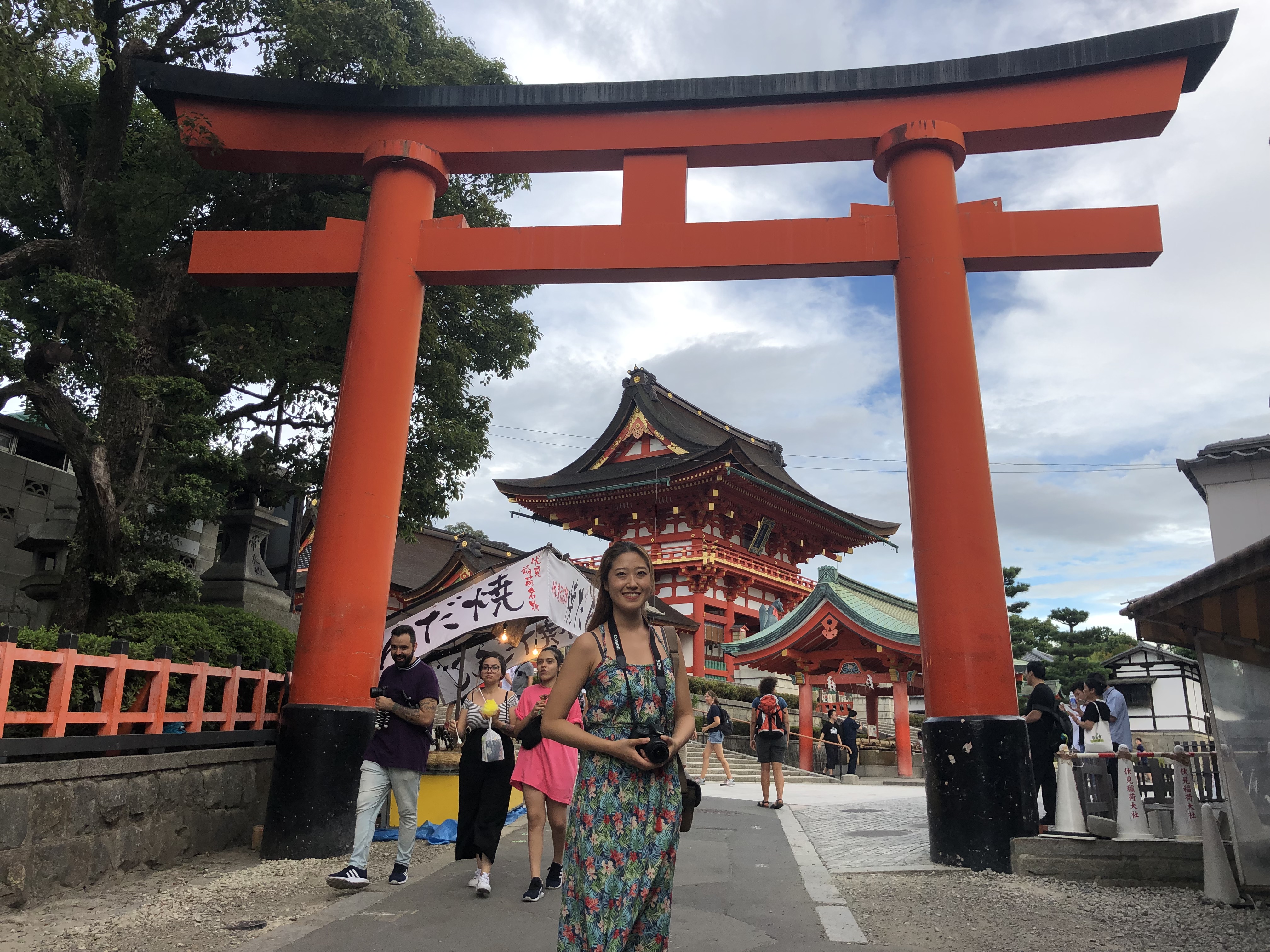It’s a bit like stepping into another world. The path up the mountain is in part an immersion in nature and in part an otherworldly tunnel of red and black space. It is one of the most iconic places in Kyoto, and perhaps, Japan.
The Fushimi Inari-taisha is a Shinto shrine. Shinto is the original religion of Japan, predating foreign-born religions like Buddhism and Christianity. It revolves around a collection of ritual practices that allow people to connect with their ancestors and Japan’s ancient past. Fushimi Inari-taisha is a Shinto grand shrine (“taisha”) to the god of rice (“Inari”) that is in the area called Fushimi.
While Inari is the god (“kami” or spirit/divine essense) of rice, by extension, it is also the god of business in general. Thus, as you’d expect in the modern world, this is a big deal. But before exploring any deeper, we had to pass through a torii (gate) separating the outside space from the sacred space within, followed by a quick cleanse to prepare the mind.
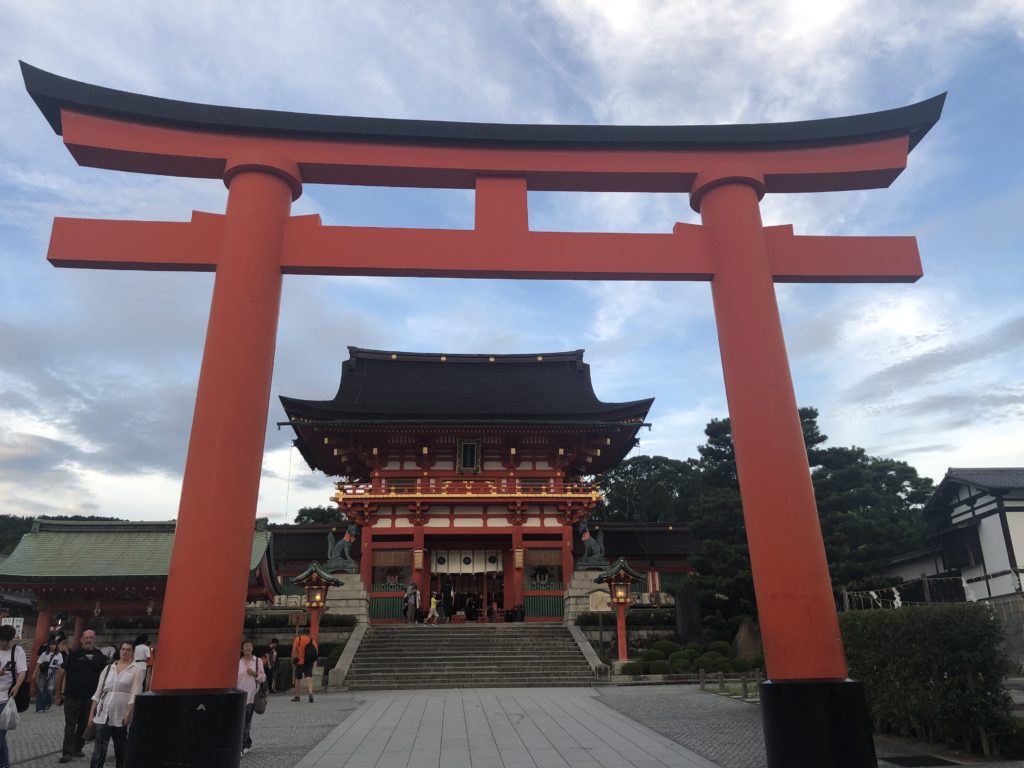
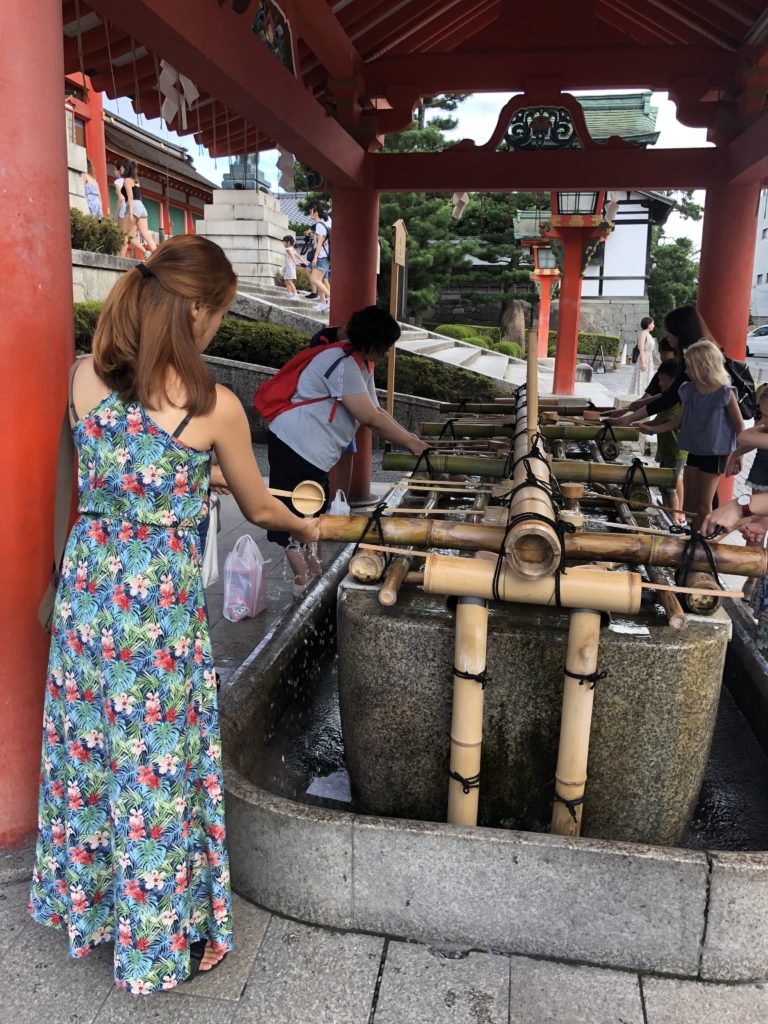
As a shrine, the site goes all the way back to the 800’s. There are a handful of structures at the base of the complex, including the main shrine which was built in 1499. All around these various buildings are statues of foxes. These are supposed to be messengers for the gods and many have stalks of rice or keys for the rice granaries in their mouths.
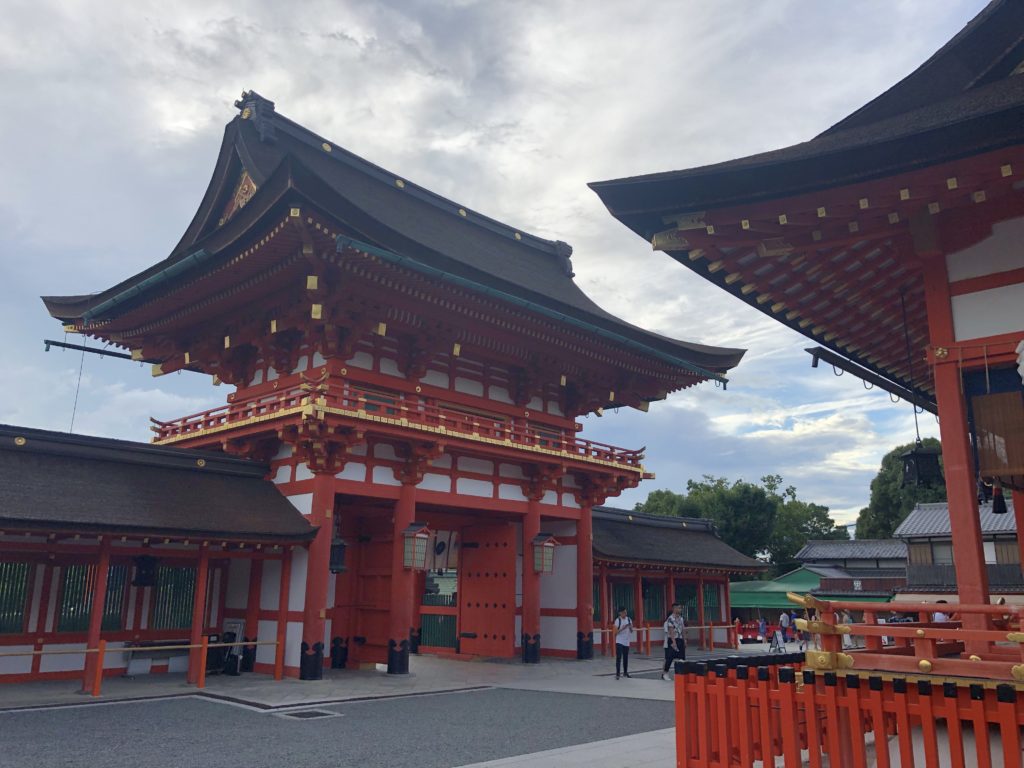
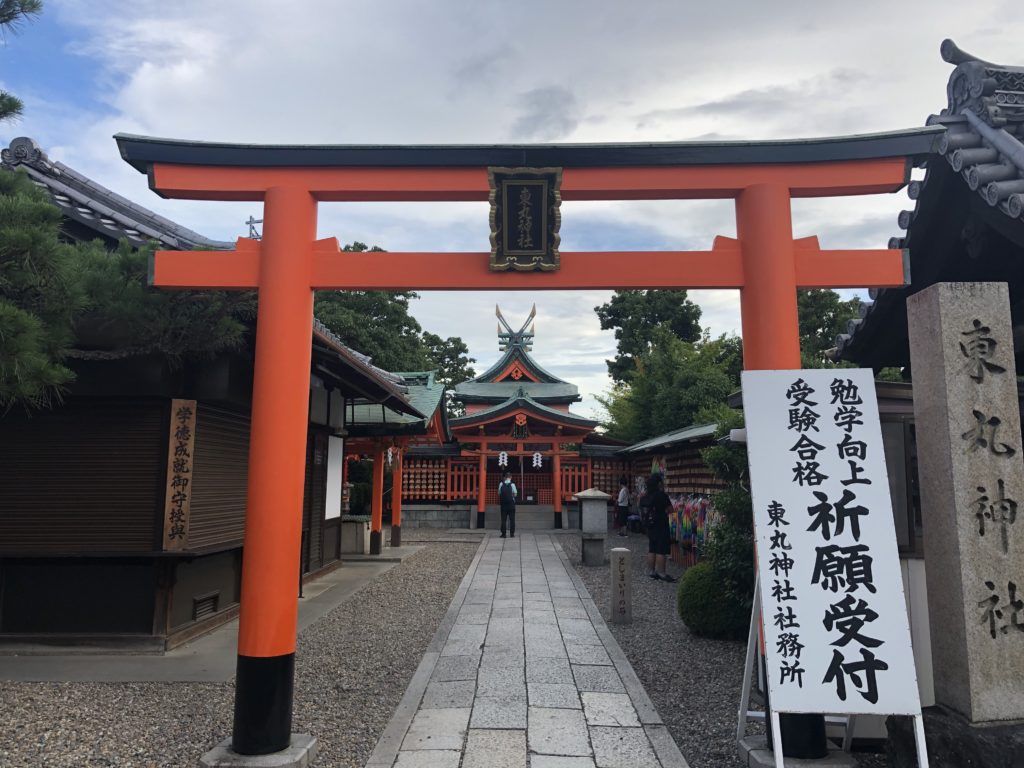
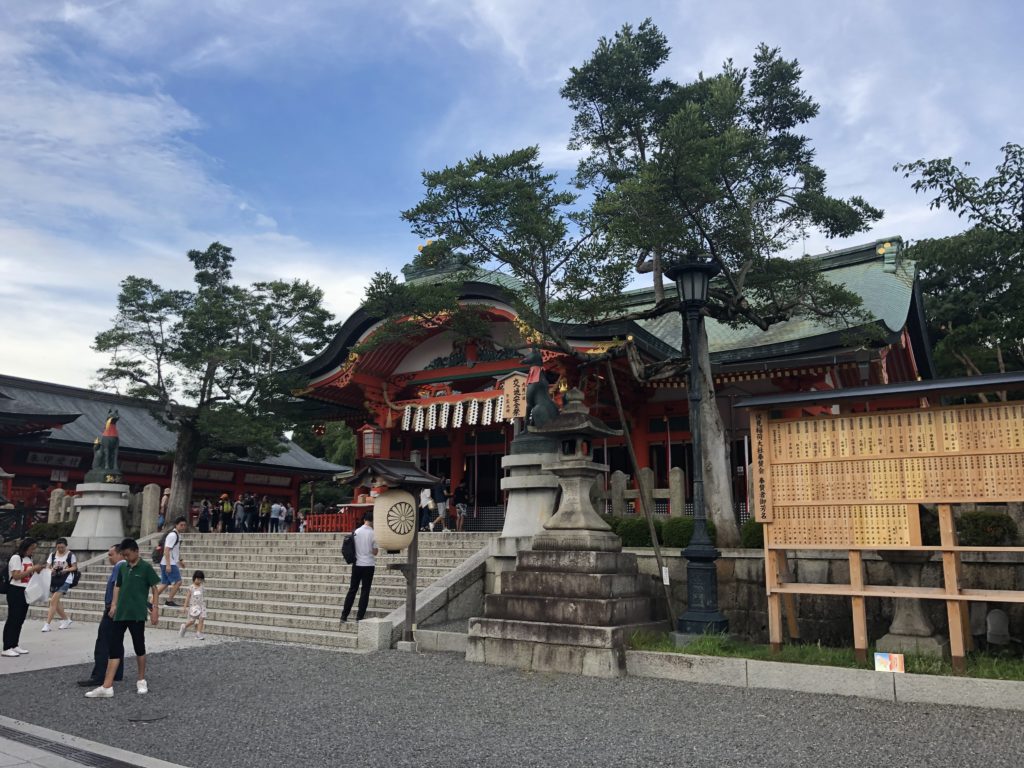
The building above is this shrine’s “haiden”, a place of worship that is placed in front of the main sanctuary (“honden”). The main sanctuary is the place for the enshrined god, which is off-limits to the general public. The haiden is thus the window into the sanctuary, which itself is a conduit to the specific god.
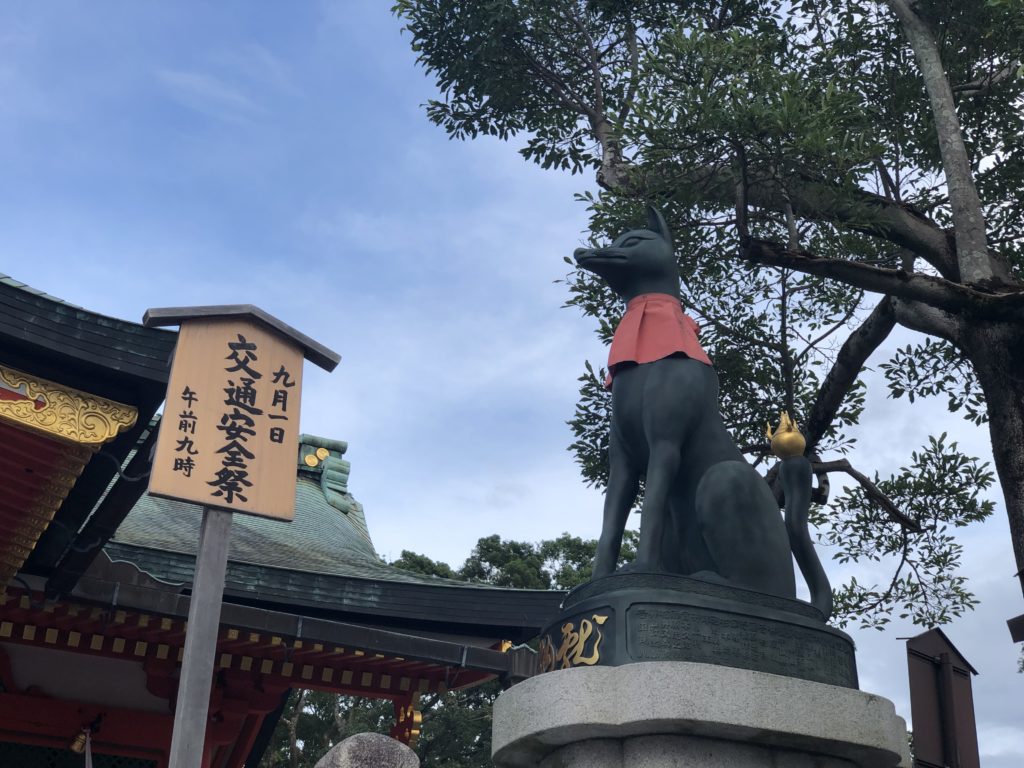
While this complex of buildings around the main shrine is beautiful, it is actually what is set behind it that really draws the crowds. The shrine is set at the base of a small mountain named Inari. There are various paths up the mountain that seem to take one into another world. Take a look:
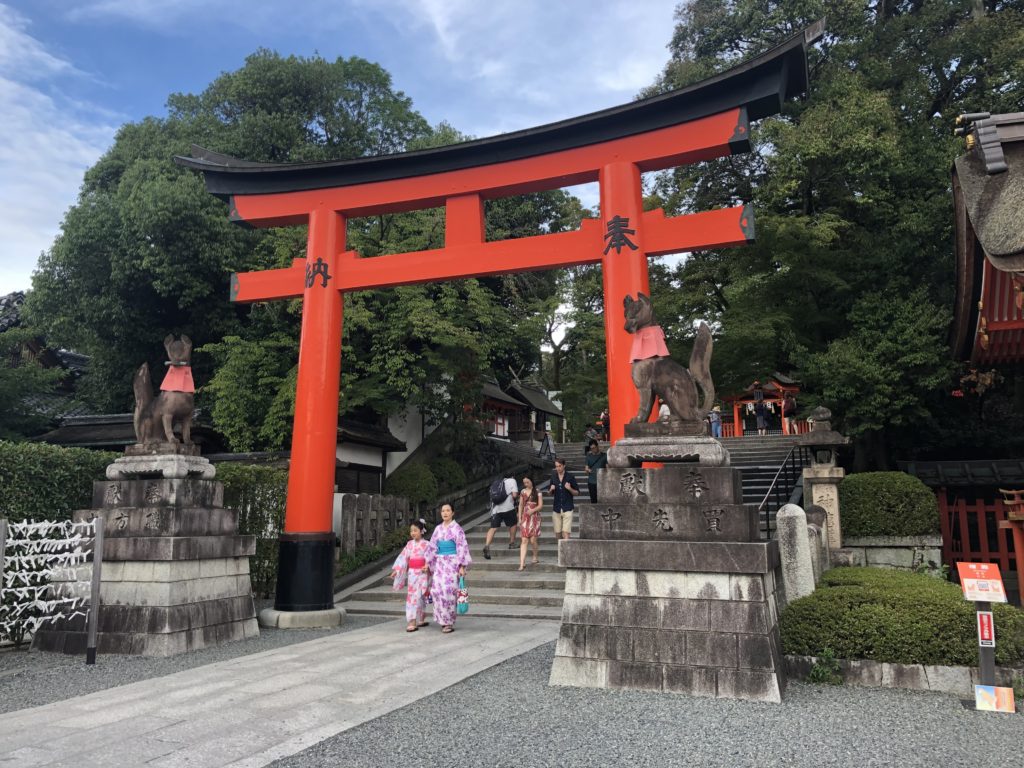
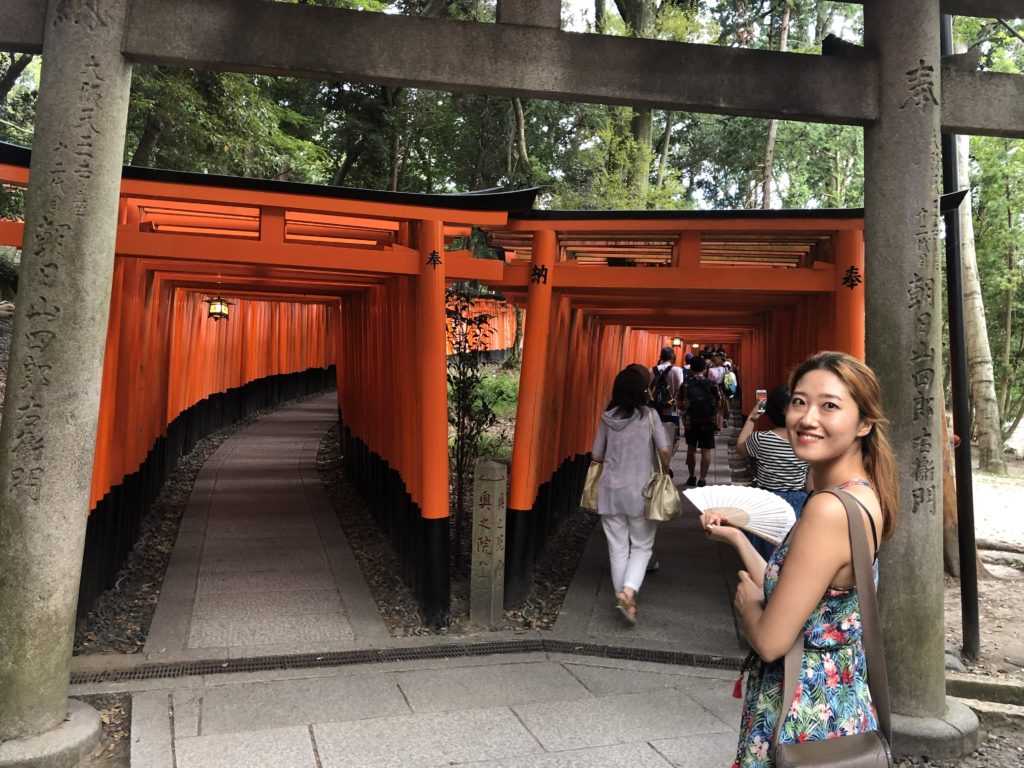
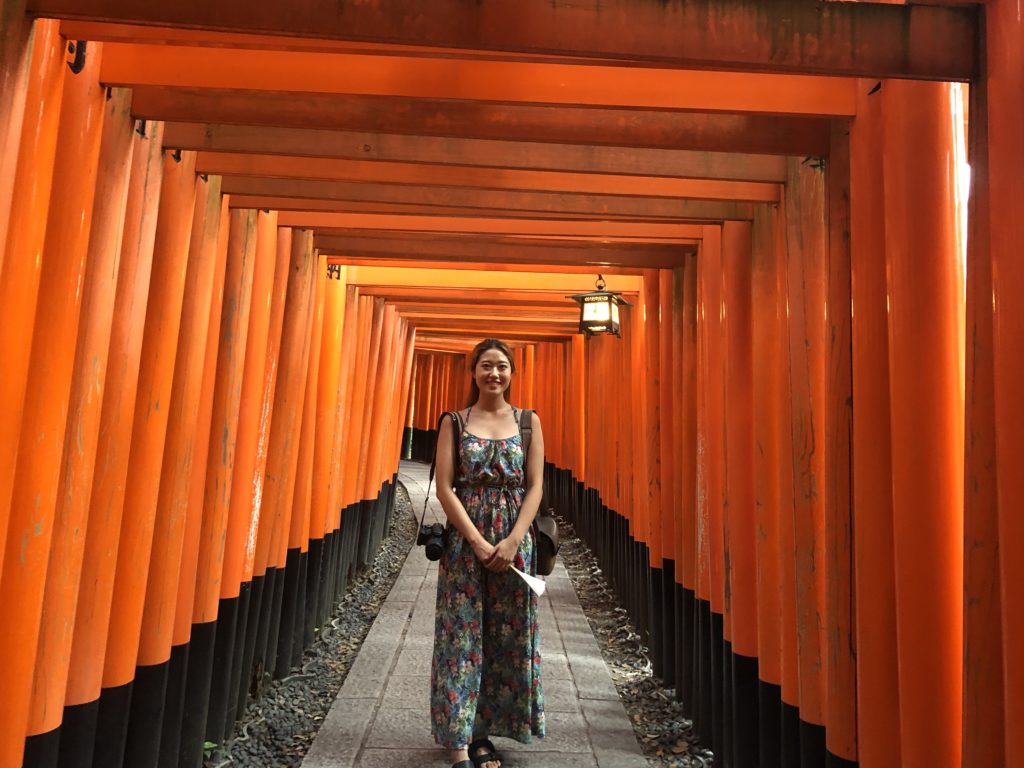
Over 1,000 torii (gates) are placed side-by-side, creating a strangely beautiful tunnel of red and black. You pass through this mesmerising creation as you wind your way up the mountain through a fairly dense forest. It is spectacular. During the Edo period (1603-1868), it became a custom for businesses to donate a torii to the complex either in thanks or in the hopes of good fortune. Looking backwards through the tunnel, one can see the names of all the contributing businesses attached to each gate.
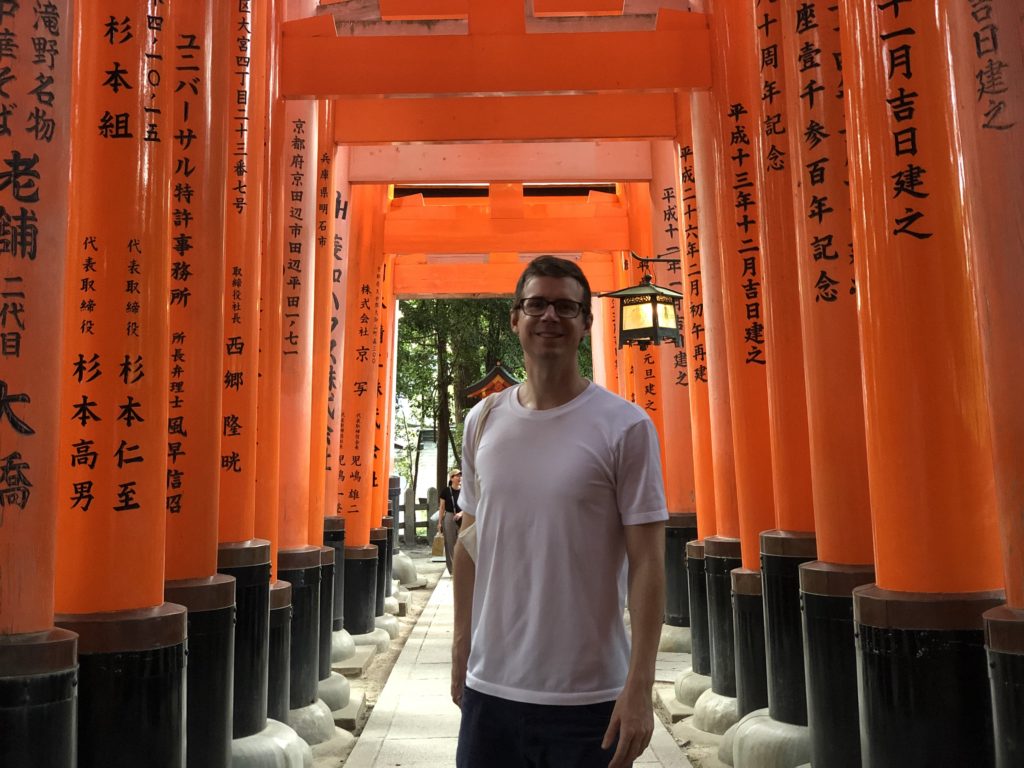
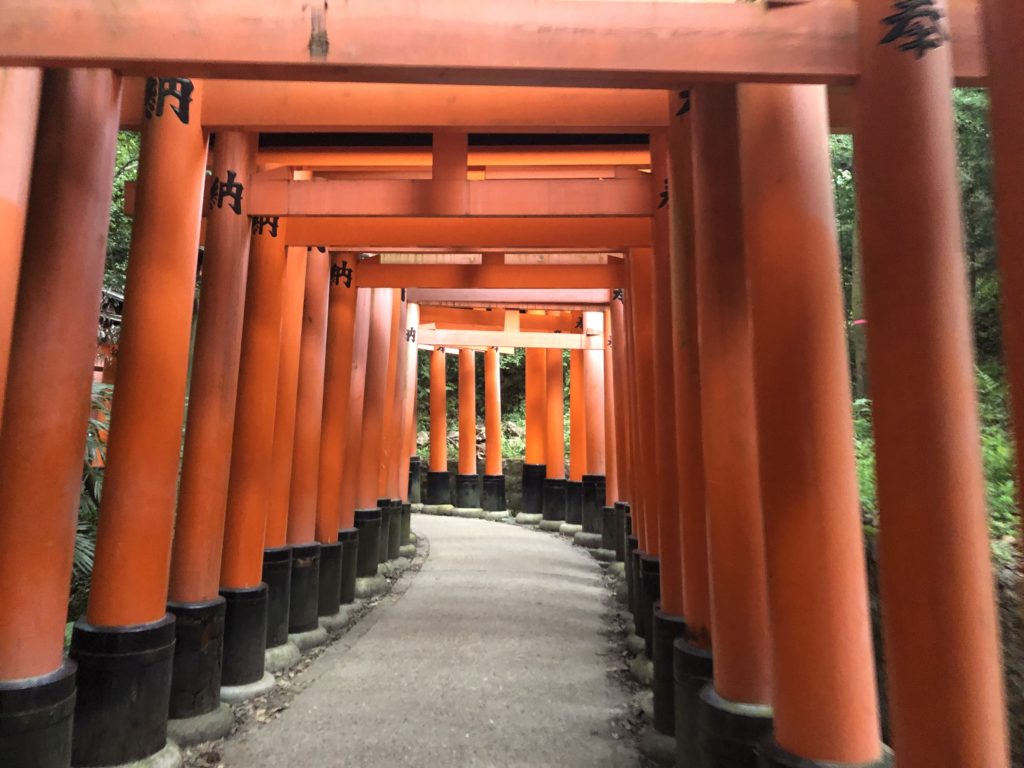
Along the way, there are all sorts of small shrines and structures set in breaks in the dense forest. It’s exceptionally scenic.
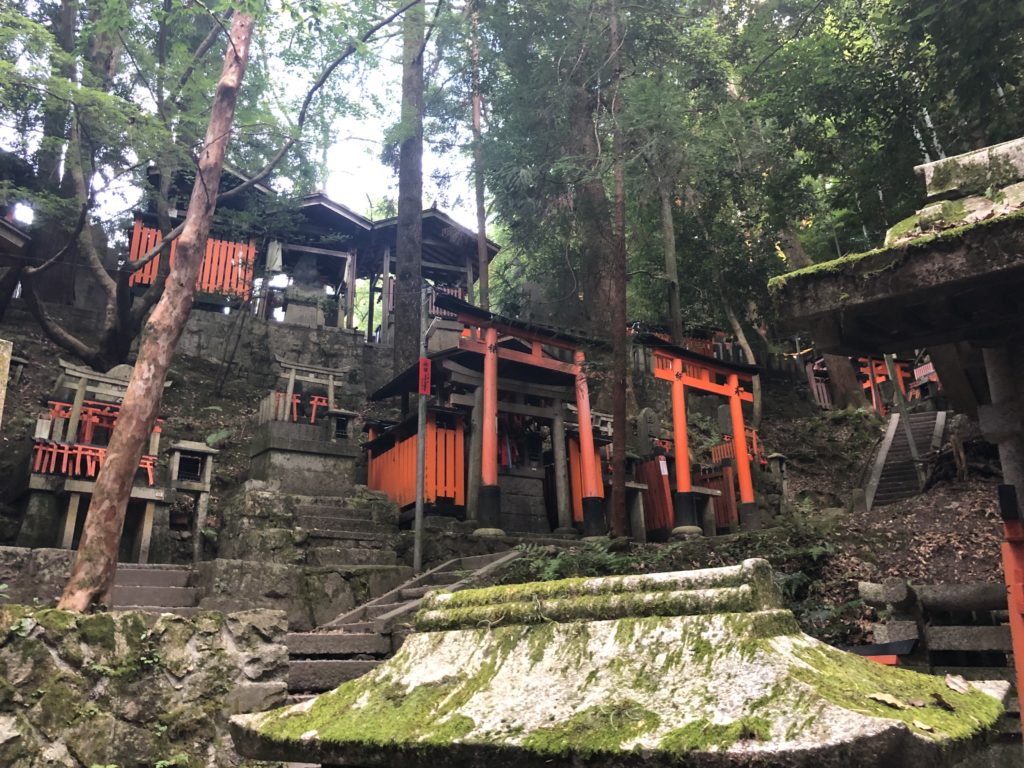
A couple pro tips:
(1) Get there early or late in the evening (it’s one of the few 24-hour shrines). It is super popular so it can get jam-packed. Nothing dampens a spiritual experience like a couple tour groups elbowing their way past you.
(2) Take mosquito spray.
Forgetting the second point above, we had to cut our trek a little shorter than we’d have liked. We didn’t make it up to the top, but the 4km hike up is supposed to take about two hours.
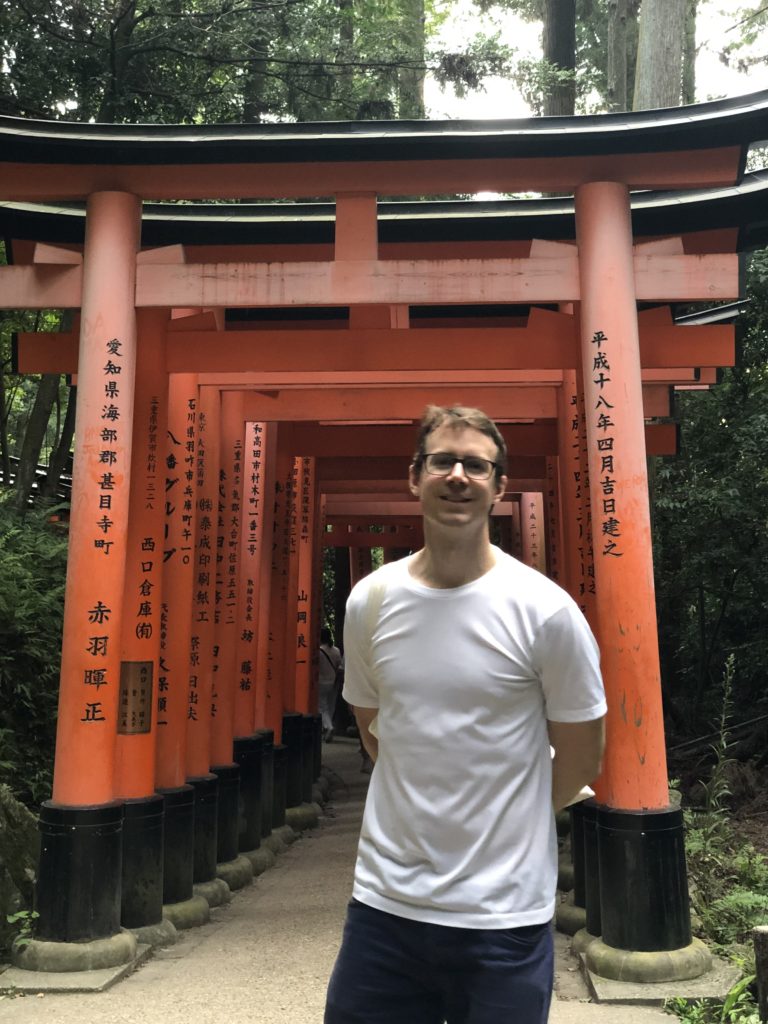
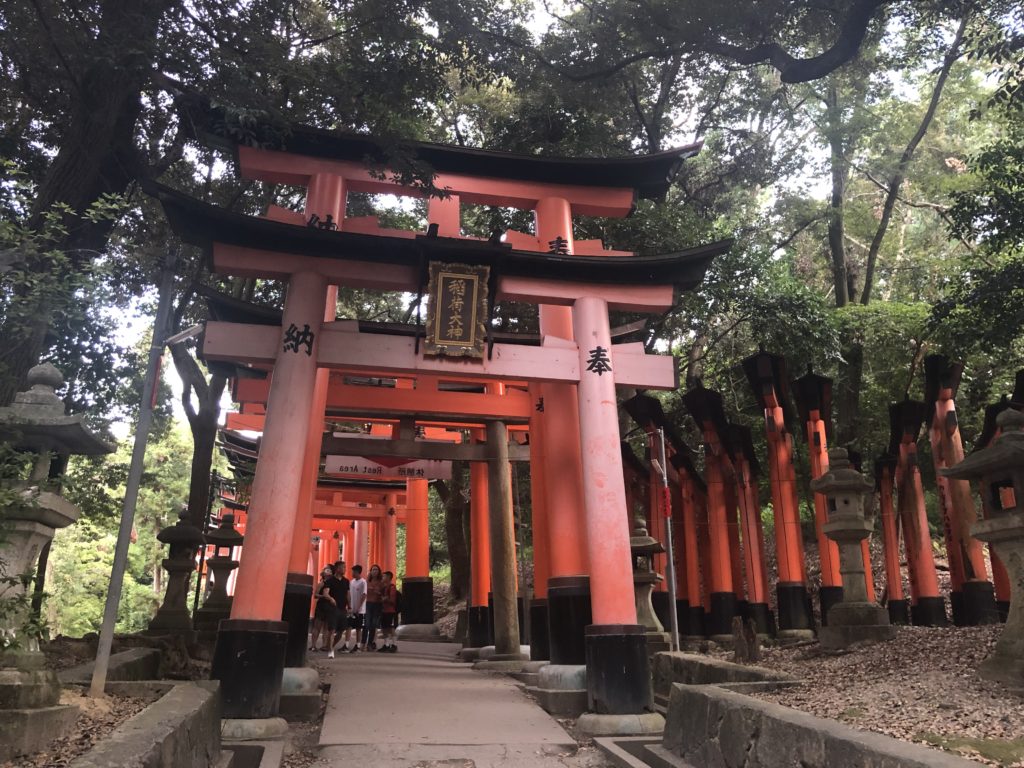

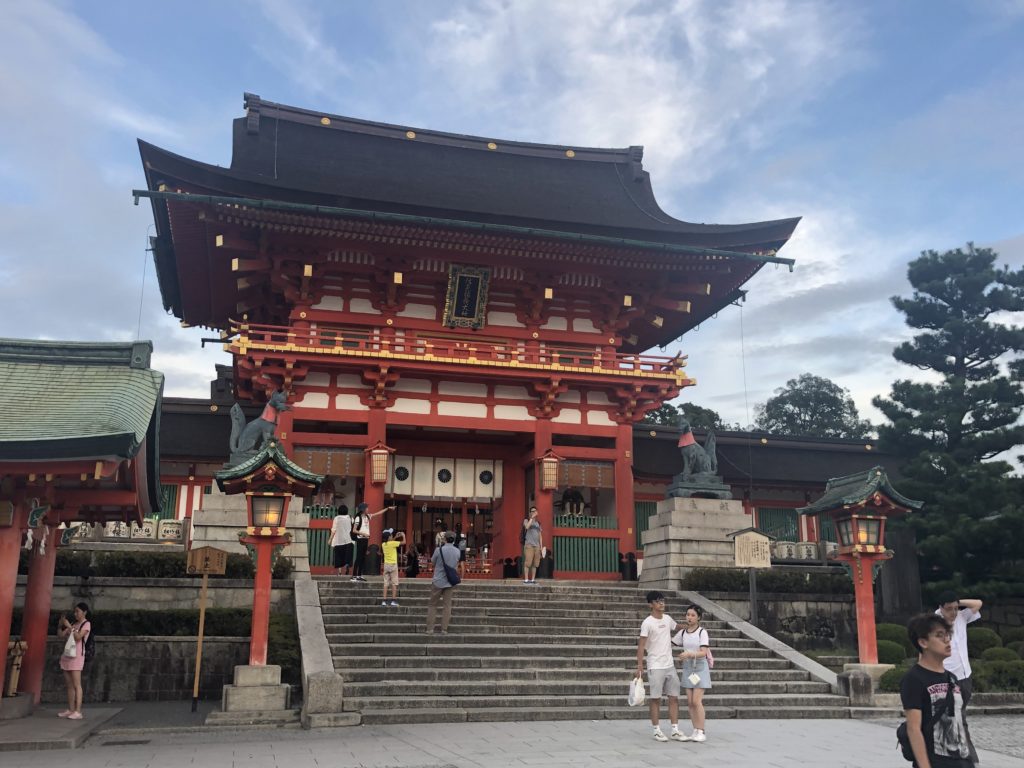
Getting there is super easy. You have two stations to choose from (highlighted below) – the Fushimi Inari station on the Keihan Main Line (blue) or the Inari station on the JR Nara line (red & white). Inari station is a little closer, but Fushimi Inari station isn’t more than five minutes from the shrine (just follow the crowds eastwards and over a small bridge).

We decided to venture south on foot to explore a bit of suburban Kyoto. While searching out a restaurant we found a nice supermarket instead. We picked up some dinner (okonomiyaki and some egg & rice seaweed wraps) and found a spot next to a small river to polish it off. True to form, the supermarket-supplied chopsticks sets came with tooth picks. Japan is truly a land of convenience.
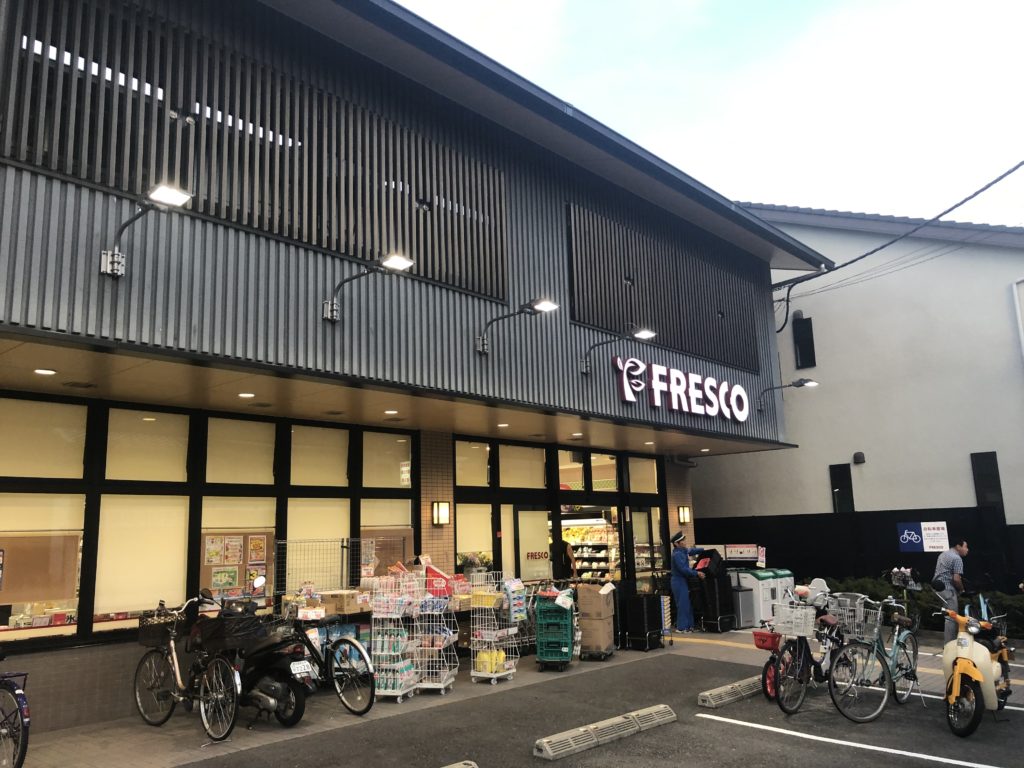
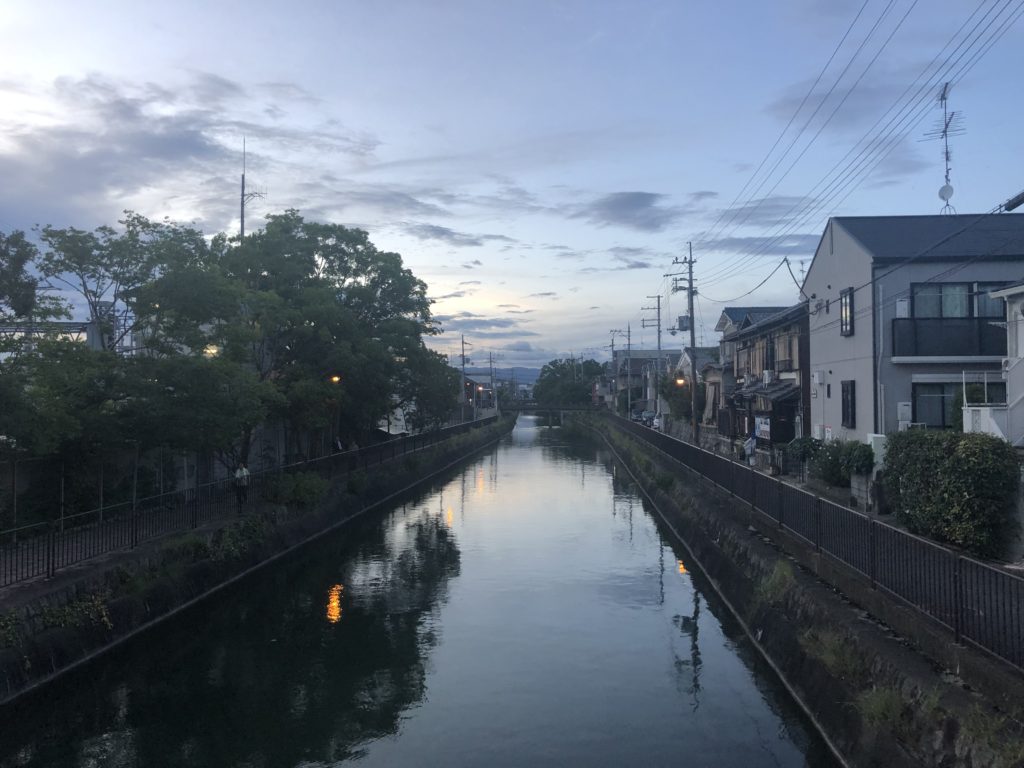
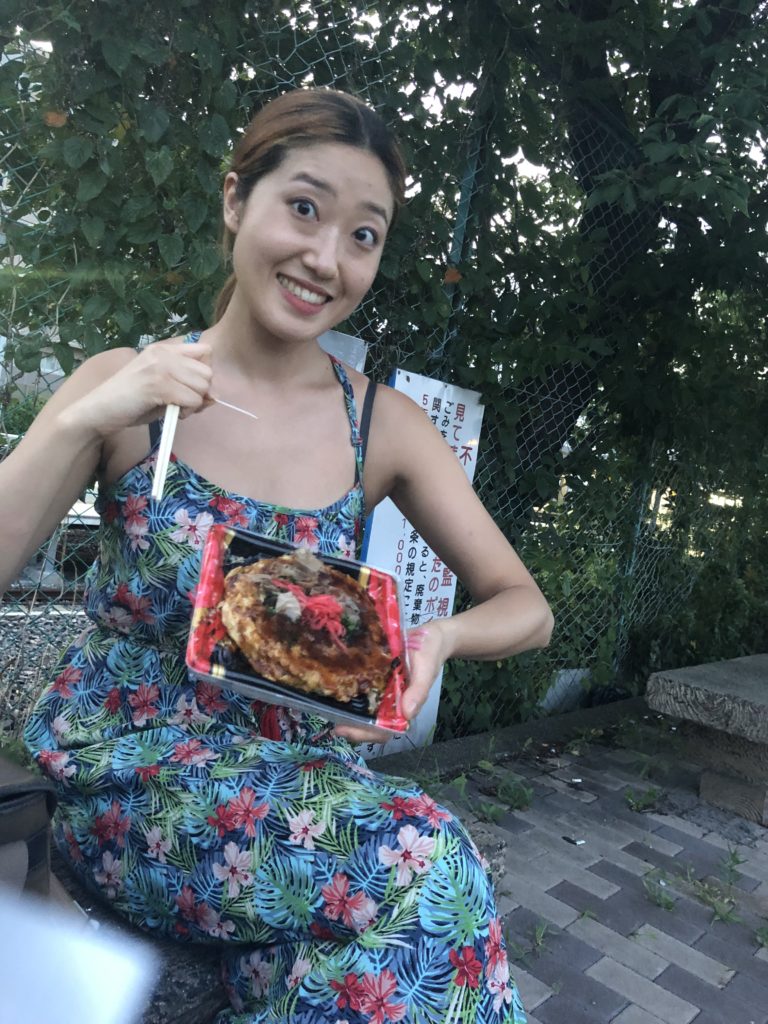
Wandering around the suburbs we found convenience stores, lots of busy restaurants, some pachinko parlours, bicycles and peaceful, quiet streets. We hopped on the train at Fujinomori station and headed back to the hotel.

